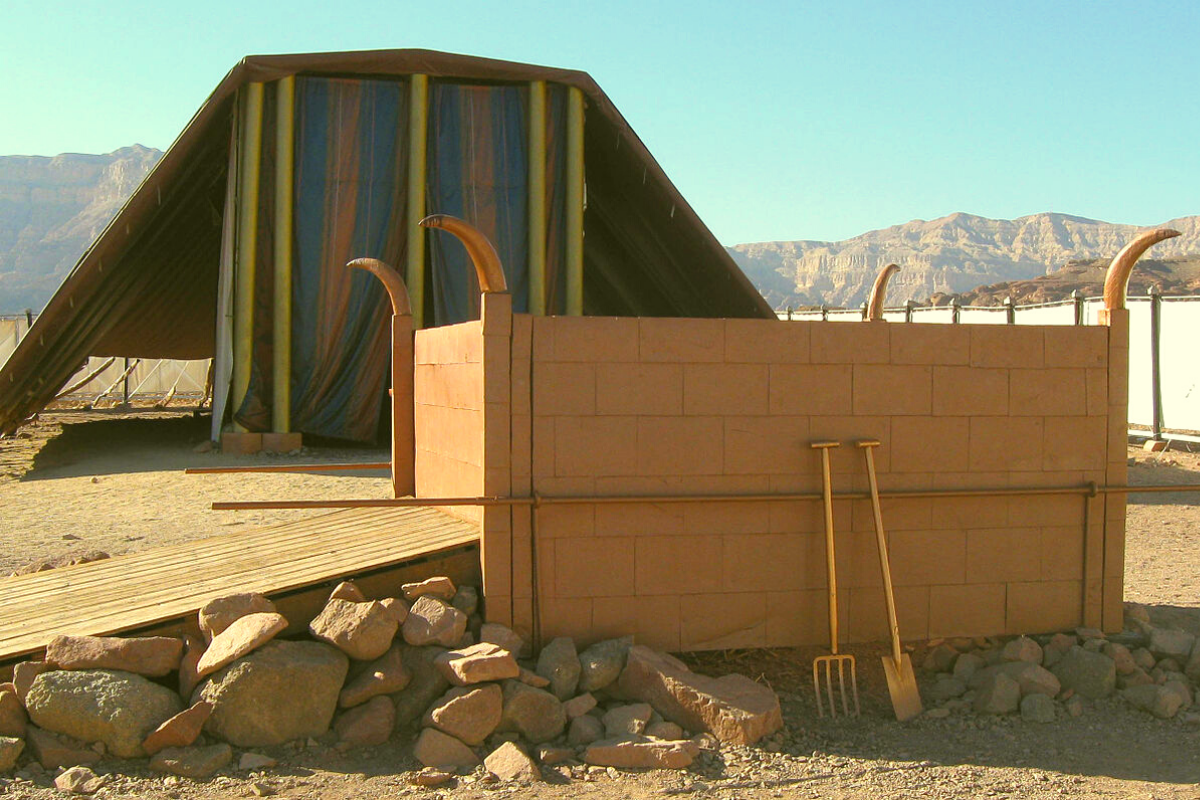
The Tabernacle as God’s Protection
In the wilderness, the tabernacle was placed in the centre with three tribes camping on each side. The tribe of Levi, from which the priest and tabernacle servants came, camped on the east side near the entrance.
The tabernacle was placed squarely in the centre of the tribes; this reveals that God came to dwell in the midst of His people. With the Tabernacle in the centre of the camp, there was easy access as well as complete protection for all the tribes.
The cloud over the tabernacle could spread out over the entire camp, so the people would have shade by day and light by night. Significantly, everyone could have access to the presence of God as well as receive His complete protection.
Deuteronomy 23:14 declares, “For the Lord your God moves about in your camp to protect you and to deliver your enemies to you. Your camp must be holy, so that he will not see among you anything indecent and turn away from you.”
The Psalms also emphasize that God dwells in the midst of His people. Psalms 46:5 says, “God is within her, she will not fall; God will help her at break of day.”
God Expresses Himself
The New Testament also emphasizes this truth. Referring to the Lord Jesus Christ, Revelation 1:13 says, “And among the lampstands was someone like a son of man, dressed in a robe reaching down to his feet and with a golden sash around his chest.” Scripture confirms that He dwelt in the midst of His people.
It is important to note the main division of the tabernacle and the components. This is a classical example of how God expresses Himself in tangible form yet highly symbolic, with deep spiritual and prophetic insight.
God met Moses on Mount Sinai and described to him how the Tabernacle should be built. Every detail depicts aspects of Jesus’ earthly ministry. There were three compartments to the tabernacle.
God’s Abode
In the Tabernacle manual, God began with the Holy of Holies; then the Holy Place and the Outer Court. Commonly, we think in the reverse order. That is, the Outer Court, the Holy place and the Holy of Holies. People approached God in this manner.
However, God began His description of the Tabernacle with the Ark of the Covenant. This was His place of abode. Then He moved outward toward the outer court.
The spiritual truth is that God first began with the place of His abode where forgiveness and mercy could be obtained and not with the Outer Court. The furniture of the outer court consisted of two main pieces: the “Brazen Altar” and the “Laver.”
Exodus 27:1-2 provides the description regarding its construction. “Build an altar of acacia wood, three cubits high; it is to be square, five cubits long and five cubits wide. Make a horn at each of the four corners, so that the horns and the altar are of one piece, and overlay the altar with bronze.”
God’s Meeting Place
The altar was the place of substitutionary sacrifice; the place of death. There, blood was poured out, and the sacrifice (body) was consumed by fire, which speaks of judgement. It foreshadowed the Cross on which the Lord Jesus shed His blood to pay the penalty for the sins of the world.
In a sense, it was the meeting place for the Holy God and sinful man. God came down to meet with the sinner, where He accepted a substitute for His sin. In this connection, the altar was truly a type of Christ, who became the substitute for man’s sin and thus enabled the Holy God and sinful man to meet.
The altar depicts the Cross, which is the only way of salvation. Therefore, receiving Jesus as Saviour, produces the only true foundation in a person’s life. The apostle Paul said in 1 Cor.3:11 “For no one can lay any foundation other than the one already laid, which is Jesus Christ.”
Photo taken from Wikimedia Commons









